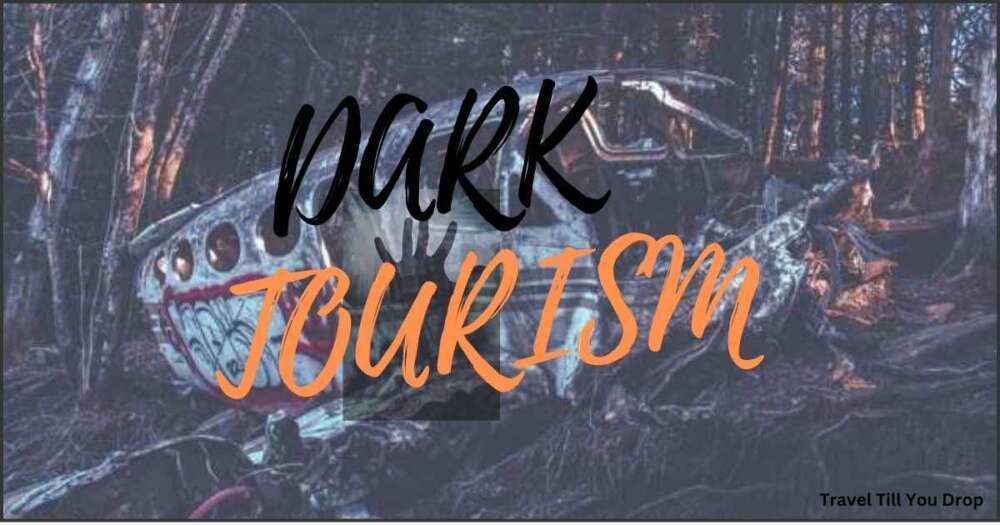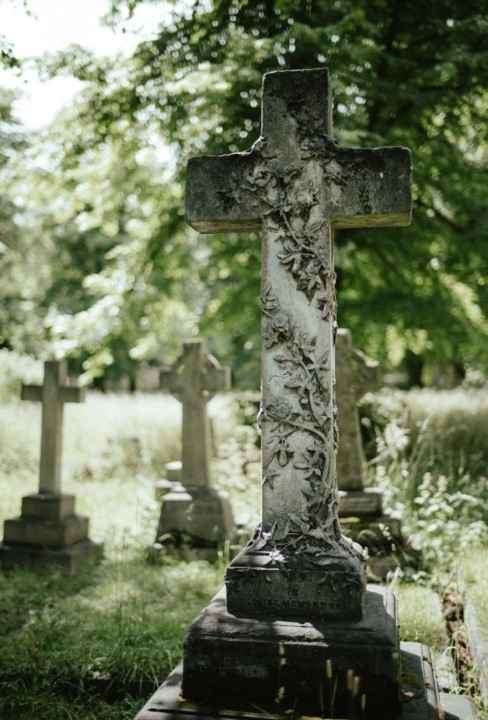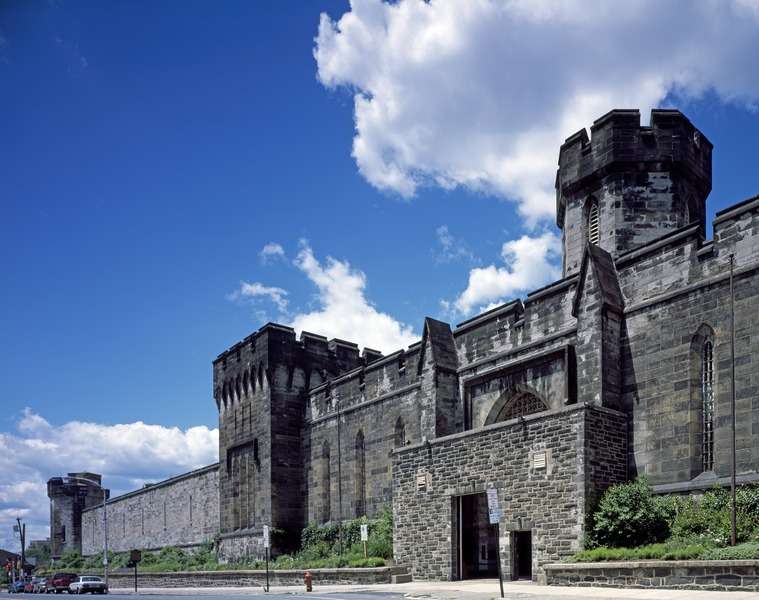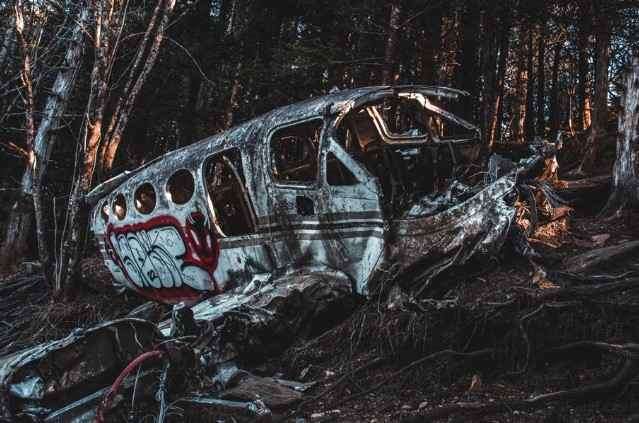- Home
- Blog
- Write for Us
- Travel Shop
- Type of TripsSolo Female TravelGirls Trip DestinationsAdventureBudget TravelLuxury TravelSolo Female TravelGirls Trip DestinationsAdventureBudget TravelLuxury Travel
- Resources

Table of Contents
Welcome, thrill-seekers and history buffs! As seasoned experts in dark tourism with over 5 years of exploring the gloomier side of travel, we’re here to guide you through this fascinating world. Dark tourism isn’t your typical beach vacation – it’s about exploring places associated with death, tragedy, and the macabre. Spooky, right?

But why do I love this eerie form of tourism? It’s simple: it’s the thrill, the history, and sometimes, just because we can’t look away from a car crash. Dark tourism satisfies our curiosity about the darker aspects of humanity and history.
Now, let’s dive into the various shades of dark tourism.
First up, haunted sites. Because who doesn’t love a good ghost story? These are places where it’s rumored that spirits of the past still linger. Remember, if you feel a chill, it might not just be the air conditioning.
The Tower of London, England
History: Ah, the Tower of London, where blood-soaked history meets ghostly encounters. This place has seen its fair share of executions, including the notorious Anne Boleyn and Lady Jane Grey. Legend has it that their footsteps still echo through the halls, and visitors can’t resist reporting some supernatural sightings.
Hauntings: Now, if you’re hoping for a tête-à-tête with a headless queen, you’re in luck! The ghost of Anne Boleyn, head in hand, makes quite an appearance here. And she’s not alone – the Princes in the Tower and the White Lady also like to spook visitors.

History: Philadelphia’s Eastern State Penitentiary was no luxury hotel. From 1829 to 1971, it housed some of the toughest criminals around. The physical and mental torture inflicted upon the inmates left a spiritual imprint that still lingers to this day.
Hauntings: If you’re up for a spooky encounter, this place won’t disappoint. Brace yourself for disembodied voices, shadowy figures, and that uncomfortable feeling of being watched – all the ingredients for a paranormal party. Oh, and Al Capone was here, too, so keep an eye out for his ghostly presence.
History: Welcome to the Suicide Forest, where the trees whisper tales of tragedy. Aokigahara has been infamous for centuries as a place where those in desperate times came to end their lives, especially during famines.
Hauntings: Now, a heavy, oppressive atmosphere may not be everyone’s idea of a fun time, but if you’re looking for ghostly apparitions and whispers in the wind, you’ve come to the right place. The forest is said to be haunted by the spirits of those who died by suicide, adding an extra layer of spookiness to the scenery.
History: Brace yourself for a tale of love, betrayal, and murder, my daring traveler. Château de Brissac, the tallest castle in France, has a dark past. In the 15th century, its walls witnessed the ultimate act of marital discord when Charlotte de Brézé was murdered by her not-so-thrilled husband.
Hauntings: If you’re lucky, you might catch a glimpse of Charlotte’s ghost, the “Green Lady” of the castle. Donning a fashionable green dress and haunting the tower where her life was tragically cut short, she’s not one to be ignored. Visitors have reported hearing her moans and whispers, adding an extra chill to this already hauntingly beautiful castle.
Ah, the allure of haunted sites. Why do they captivate our dark souls and draw us in like moths to a spooky flame? Well, my fearless friend, it’s all about psychology. The mix of historical intrigue, the thrill of the unknown, and that primal fear of ghosts creates a tantalizing cocktail that many dark tourists can’t resist. It’s a chance to confront our fears in a controlled environment, leading to a cathartic experience that’s spooky and empowering all at once.
Responsible Visiting Tips for Haunted Sites
Now, while we embark on this spine-tingling journey, let’s make sure we do it responsibly. Here are some tips to keep in mind:

Next, we have battlefields and war zones. Soaked in history and blood, these sites tell stories of courage, sacrifice, and, sometimes, folly. They’re like open-air museums but with more goosebumps
So, you’ve got a thirst for the dramatic and a heart that beats for history’s more, shall we say, bloody moments? Well, darling, you’re in the right place. Battlefields and war zones aren’t just for the faint-hearted or history buffs in tweed jackets; they’re the ultimate runway for the brave solo female traveler ready to strut through the pages of history with a flair only she can bring. These sites, scarred by the dramas of yesteryears, are waiting for you to explore, contemplate, and maybe strike a pose or two in homage to the bravery and tragedy that unfolded there.
Notable Battlefields and War Zones Around the World
History: Picture this – the Battle of the Somme, basically the ultimate showdown of World War I. Over a million men saying their dramatic goodbyes in the mud and despair of northern France. It’s like the season finale of your favorite show, but way, way more intense.
Significance: Today, the Somme is your open-air museum to the harsh realities of trench warfare and a monumental testament to “never again”. Walk the preserved trenches, pay your respects at the memorials, and let the weight of history sink in. But remember, darling, mud can ruin your shoes, so dress accordingly.
History: The Battle of Gettysburg – where the American Civil War had its mic-drop moment. Three days of epic battles, drama, and a turning point that would make any scriptwriter jealous. Over 51,000 casualties, proving that sometimes, reality bites hard.
Significance: Now a chic national park, Gettysburg offers tours, reenactments, and the chance to ponder democracy, freedom, and how to rock a 19th-century military uniform (spoiler: it’s all about the attitude). It’s history, but make it fashion.
History: Hiroshima – the name alone chills. The first city to experience the “glow-up” nobody wanted, courtesy of an atomic bomb. The immediate loss of 70,000 souls with many more to follow, a devastating reminder of war’s indiscriminate cruelty.
Significance: The Peace Memorial Park and its Atomic Bomb Dome are not your average touristic spots. They’re powerful symbols of hope, resilience, and the ultimate plea for world peace. It’s where history lectures meet real-world consequences, all beneath the shadow of that unmistakable dome.
History: D-Day, baby! The massive beach party from World War II where the Allies gatecrashed Nazi-occupied Europe. It’s the stuff of epic war movies, complete with sandy beaches, heroic charges, and a turning point that reshaped our world.
Significance: Strolling the Normandy beaches, dotted with memorials and museums, is like walking in the footsteps of giants. From Omaha Beach to the American Cemetery at Colleville-sur-Mer, it’s a tribute to those who fought so we could run free.
Then, there are disaster sites. Places where nature or human error wreaked havoc. They’re a grim reminder of the power of nature and the fragility of human life. It’s like watching a disaster movie, but you’re actually there.
Prisons and asylums are up next. These are places where society’s rules were enforced, sometimes brutally. They’re a hit among dark tourists for their eerie ambiance and the secrets they hold within their walls.
Lastly, we have catacombs and burial grounds. These sites give a whole new meaning to ‘going underground.’ They are a direct link to the past and a stark reminder of our mortality. Plus, they’re great for spooky selfies!
Dark tourism is more than just a casual stroll through a spooky site. It’s an adventure into the heart of human history, often revealing the darker chapters that textbooks shy away from. It’s like being an explorer, but instead of discovering new lands, you’re uncovering hidden truths.
What’s often overlooked is the impact dark tourism can have on both the visitor and the local community. For visitors, it’s an eye-opener to the realities of the world, far removed from the sugar-coated narratives of mainstream tourism. For locals, it can be a double-edged sword – a means of economic support but also a reminder of painful histories. As the famous dark tourist, Sir Shadows-a-lot, once quipped, “It’s like selling tickets to your own tragic past.

Being a responsible dark tourist is crucial. Here’s a quick guide:
A word of caution: it can be heavy. It’s not unusual to feel a range of emotions from sadness to anxiety. It’s important to process these emotions and, if needed, discuss them with others. As the infamous dark tourist Dr. Doom says, “You’re not just visiting places; you’re visiting souls. Be prepared for some of them to follow you home.”
It is evolving. With virtual reality and augmented reality, soon you might be able to experience these sites from the comfort of your couch. But let’s be real – it’s not quite the same as being there and feeling the chill down your spine.

it is not just a Western phenomenon. From the catacombs of Paris to the Hiroshima Peace Memorial in Japan, these sites are global. They remind us that every culture and country has darker moments, and they’re not just local stories but human stories.
Now, let’s talk ethics. Yes, we need to. As “Dr. Dark,” a leading authority in dark tourism, says, “It’s about respect, not just spectacle.” Remember, these sites are often linked to real tragedies. So, no inappropriate selfies, please!
1. Respect for the Deceased and Their Descendants
Behave Appropriately: Understand that these sites are often places of mourning and remembrance. Avoid loud, disruptive behavior, inappropriate jokes, or any actions that might be seen as disrespectful.
Avoid Inappropriate Photography: Refrain from taking selfies or photos that might trivialize the suffering that occurred at these sites. In some locations, photography might be prohibited altogether, so always check the rules beforehand.
2. Educational Purpose
Learn the History: Approach dark tourism with the intent to learn and understand the historical context. Educate yourself about the events that took place and the people who were affected.
Engage with Local Narratives: Listen to the stories and perspectives of local communities. Often, they have a deeper, more personal understanding of the site’s history and significance.
3. Support Local Communities
Economic Contribution: Many dark tourism sites are in areas that have suffered economically due to the tragedies that occurred there. Supporting local businesses, hiring local guides, and contributing to preservation efforts can provide much-needed economic benefits.
Volunteer or Donate: Consider making donations to relevant causes or participating in volunteer activities that help preserve the site and support the local community.
4. Sensitivity to Trauma
Be Mindful of Your Reactions: Acknowledge that visiting sites of tragedy can evoke strong emotions. Be sensitive to your own reactions and those of others, and seek support if needed.
Avoid Sensationalism: Do not treat these sites as mere thrill-seeking destinations. Recognize the real human suffering involved and avoid sensationalizing or glamorizing the tragedies.
5. Ethical Photography and Media Use
Seek Permission: If you wish to take photographs or videos, ensure it is allowed and done respectfully. Avoid capturing images that could exploit or demean the site’s significance.
Consider the Impact: Reflect on how your photos and videos might be perceived if shared publicly. Avoid content that could be seen as disrespectful or insensitive.
As we wrap up this journey into the heart of darkness, remember that dark tourism isn’t about glorifying tragedy. It’s about remembering, learning, and sometimes, healing. It’s a unique way to connect with the past, and through it, understand our present and future better.
So, there you have it – a deep dive into the intriguing world of dark tourism. Whether you’re a seasoned dark tourist or just curious about this unique form of travel, remember to tread these shadowed paths with respect, curiosity, and a bit of humor. After all, as we say in the dark tourism circles, “Sometimes, the best way to see the light is to understand the darkness.”
In conclusion, dark tourism isn’t just about being spooked or morbidly curious. It’s about understanding history, respecting those who suffered, and sometimes confronting our fears. As seasoned connoisseurs of the dark, we encourage you to explore these shadowy places responsibly. Remember, it’s not just about the thrill but the story and solemnity behind each site.
Happy (and respectful) dark touring, and as always, Travel Till You Drop!


Hi, Jill Here
Hi! I’m Jill, a Dallas, Texas girl traveling the world. After a career in the Air Force and touring over 50 countries later, my need to explore keeps going! It’s time to rock & roll and find all those places I never knew I was missing.
Table of Contents
Join me to get exclusive travel tips, giveaways and more!
Gallery
Copyright © 2023 | All Right Reserved